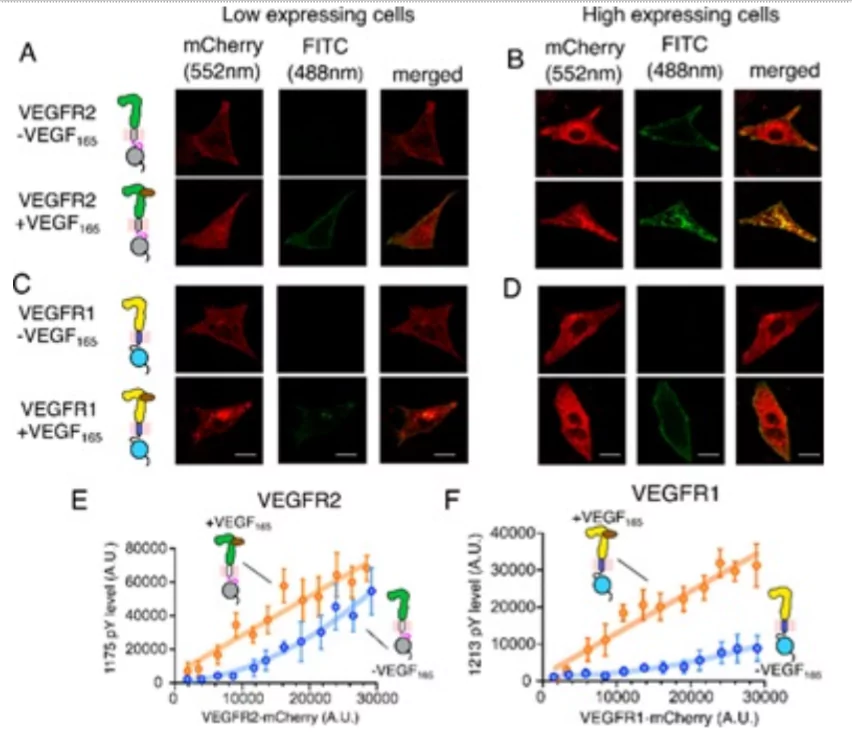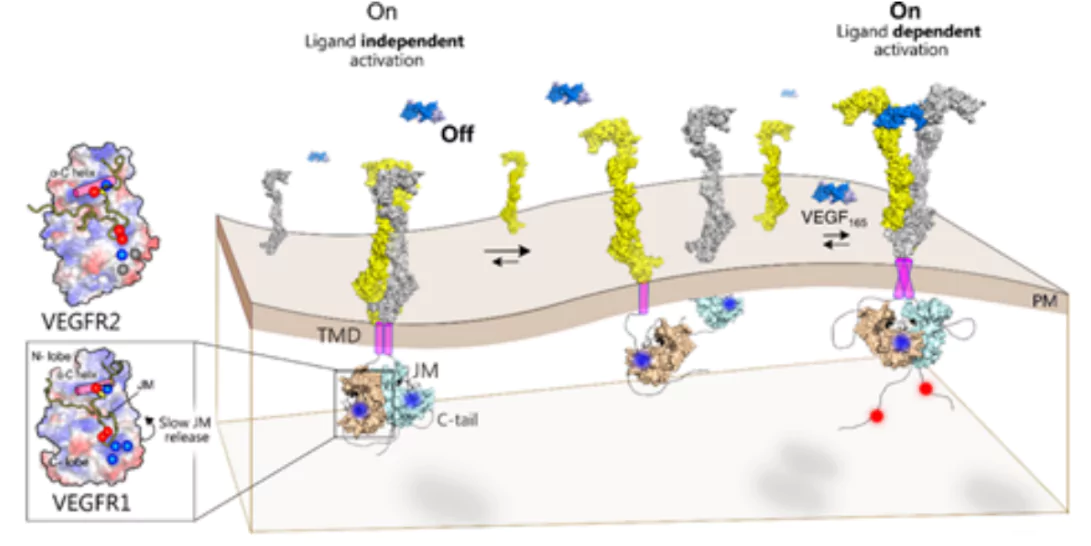Recently, Researchers at the Indian Institute of Science Education and Research (IISER), Kolkata, investigated a Receptor Tyrosine Kinases (RTK) called Vascular Endothelial Growth Factor Receptor (VEGFR).
- They found that a molecular mechanism by which a cell surface receptor which is a part of a family of enzymes that bind to growth factors helps prevent cancer.
- This enzyme VEGFR1 plays a crucial role in regulating cell growth, differentiation, survival, metabolism, and migration.
About Vascular Endothelial Growth Factor Receptor (VEGF)\
- The VEGFR family of receptors is the key regulator of the process of generating new blood vessels.
- This process is essential for functions like embryonic development, wound healing, tissue regeneration, and tumor formation.
- Various malignant and non-malignant diseases can be treated by targeting VEGFRs.
Enroll now for UPSC Online Course
Cell-Surface Receptors
- These receptors are also known as transmembrane receptors.
- These proteins are found on the surface of cells and span the plasma membrane.
- They bind to ligands that cannot pass through the plasma membrane by themselves.
- These are often hydrophilic ligands or ones too large to make it through.
|
Highlight Of The Research
- Two members of family VEGFR 1 and VEGFR 2 behaved quite differently.
Receptor Tyrosine Kinases (RTK)
- Cell surface receptors like Receptor Tyrosine Kinases (RTK) are crucial for converting extracellular signals (from chemical cues like growth factors, generally referred to as ligands) to tightly regulated cellular response.
- Ligand binding to extracellular receptors activates intracellular coupled enzymes (tyrosine kinases).
- The activated enzyme, in turn, adds a phosphate group to several tyrosine molecules that function as an adaptor for assembling a signalling complex.
- The formation of the signalling complex regulates diverse cellular functions like cell growth, development, and host immune response.
- Spontaneous activation of RTKs, in the absence of ligands, is often linked to multiple human pathologies like cancers, diabetes, and autoimmune disorders.
|
-
- While VEGFR 2, the primary receptor regulating process of formation of new blood vessels, could be spontaneously activated, without its ligand, the other member of the family VEGFR 1 cannot be spontaneously activated even when overexpressed in cells.
- It camouflages as a dead enzyme VEGFR1 and binds with ten-fold higher affinity to its ligand VEGF-A than VEGFR2.
- This ligand binding induces a transient kinase (speeding up chemical reactions in the body by an enzyme) activation.

- Activation of VEGFR1: It has been found to lead to cancer-associated pain, tumor cell survival in breast cancer, and migration of human colorectal cancer cells.
- Unique ionic latch, present only in VEGFR1: It keeps kinase autoinhibited in the basal state.
- The ionic latch hooks the juxtamembrane segment onto the kinase domain and stabilizes the autoinhibited conformation of VEGFR1.
- Open New Avenues For Developing Therapeutic Interventions Against Pathological Conditions: The small molecules targeting the autoinhibited state will have a higher potential for treating cancers like human colorectal carcinoma and renal cancer, where VEGFR1 is overexpressed.
Check Out UPSC CSE Books From PW Store

![]() 1 Jul 2024
1 Jul 2024

